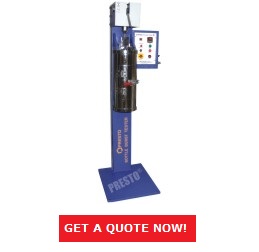

 Use of PET bottles in the bottling of carbonated drinks or any liquid that expands causes bursting problem. The quality of most of the PET bottles is too good to bear the extreme pressure. However, some of the bottles may burst with the excess of pressure inside. This is an alarm for the manufacturers to check the quality of the products at a right time otherwise customer won’t trust in your packaging. If the food items are spoiled, there are more chances of food contamination. The accidental bursting of the chemical bottles may cause severe injuries leading to fatal accidents or even death. A minor carelessness in maintaining the quality of the product could lead to a terrible result.
Use of PET bottles in the bottling of carbonated drinks or any liquid that expands causes bursting problem. The quality of most of the PET bottles is too good to bear the extreme pressure. However, some of the bottles may burst with the excess of pressure inside. This is an alarm for the manufacturers to check the quality of the products at a right time otherwise customer won’t trust in your packaging. If the food items are spoiled, there are more chances of food contamination. The accidental bursting of the chemical bottles may cause severe injuries leading to fatal accidents or even death. A minor carelessness in maintaining the quality of the product could lead to a terrible result.
A Bottle Bursting is Dangerous
To prevent bursting of the pressurized bottle, testing the bursting strength of the bottles is a very important task. This helps in determining the quality of a product before finalizing for the delivery. The prior testing of bursting strength is performed using bottle burst tester that tests the strength of the bottles by applying an excess of pressure inside them until they burst. This maximum amount of pressure a bottle can bear is determined with the help of this test, and a high-quality PET bottle can be designed before adding a beverage, chemical or liquid.
Be Safe by Testing the Quality of a Product
Presto’s highly competent Bottle Bursting Testers are efficient to provide the precise testing results. The conformance certificate and a user manual are provided with the instrument. Visit at www.prestogroup.com or contact our experts for additional technical information on bottle burst testers.
Related Blogs

Tensile strength testing is vital for ensuring material quality and reliability. Find out how this essential test impacts product performance and safety.

Test the bond strength of your materials with a peel strength tester. Perfect for quality assurance in packaging and manufacturing industries. Explore models and specifications now.

The Vacuum Leak Tester serves as a quality control instrument which uses vacuum pressure to detect package leaks on test specimens.